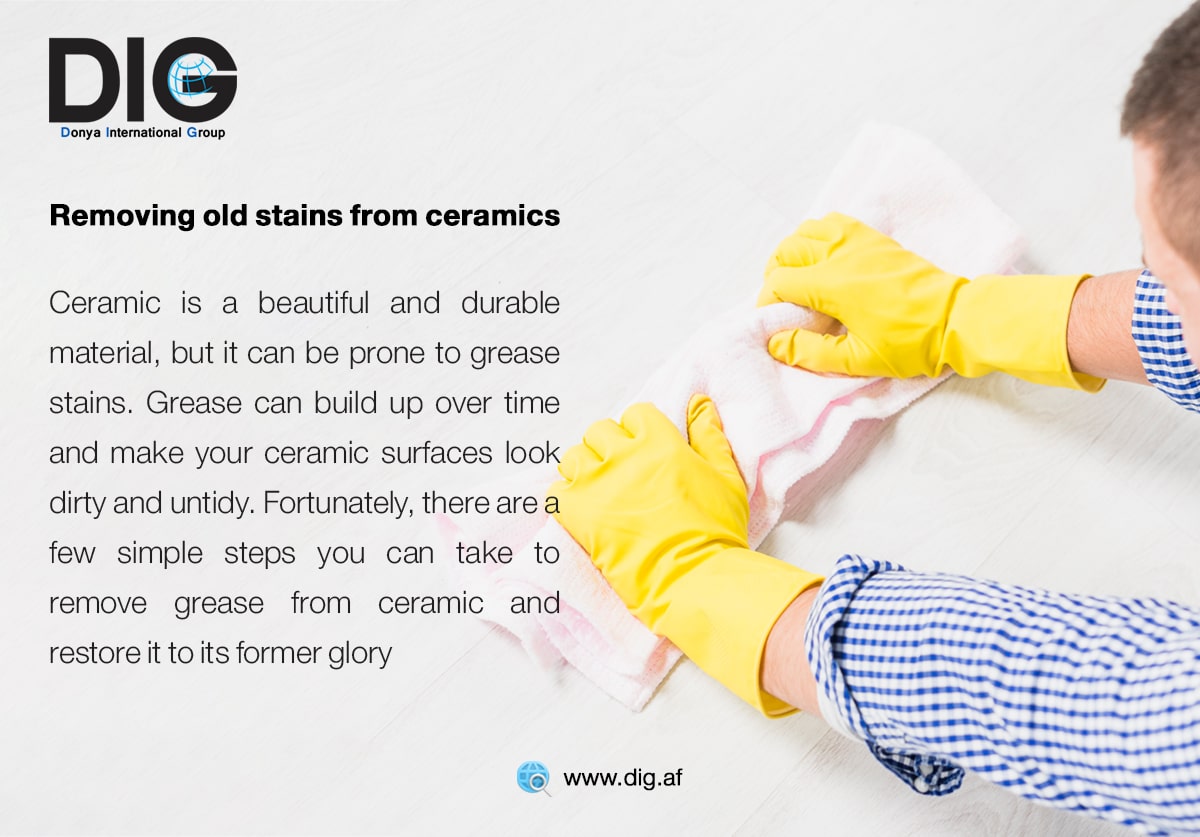


In this article, we will explore some effective methods for removing old stains from ceramics. These methods are simple and practical, using common household items.
Ceramics are one of the most popular choices for flooring, wall tiles, and kitchen and bathroom surfaces. This material is favored for its beautiful appearance, high durability, and ease of cleaning. However, over time, ceramics can develop various stains, including grease stains. If these stains are not removed promptly, they can make surfaces look dull and unclean. In this article, we will explore some effective methods for removing old stains from ceramics. These methods are simple and practical, using common household items.
Why Do Grease Stains Form on Ceramics?
Ceramic surfaces are typically resistant to most types of stains due to their smooth and non-porous nature. However, grease can build up over time, and removing it can become more difficult. Kitchens, in particular, are prone to this problem due to cooking and the use of oils. Grease from cooking or even from personal care products in the bathroom can accumulate on ceramic surfaces.
Home Methods for Removing Grease from Ceramics
1. Removing Grease with Dish Soap and Hot Water
One of the simplest and most effective methods for removing grease from ceramics is using dish soap and hot water. Dish soaps are designed to break down grease, and hot water helps dissolve it.
Steps:
2. Removing Grease with White Vinegar
White vinegar is a natural acidic cleaner that works well for breaking down grease on ceramic surfaces. It not only removes grease but also helps eliminate bad odors.
Steps:
3. Using Baking Soda to Remove Stubborn Stains
Baking soda is a versatile household item that is highly effective at removing stubborn stains, including grease stains on ceramics. It not only removes stains but also acts as a natural abrasive, cleaning the surface without scratching it.
Steps:
Important Tips for Maintaining and Cleaning Ceramics
Conclusion
Removing grease and old stains from ceramics using household methods is simple and effective. By using items like dish soap, white vinegar, and baking soda, you can easily restore your ceramics to their original state and enjoy their beauty and durability. Remember, regular cleaning of ceramic surfaces is the best way to keep them looking shiny and clean.